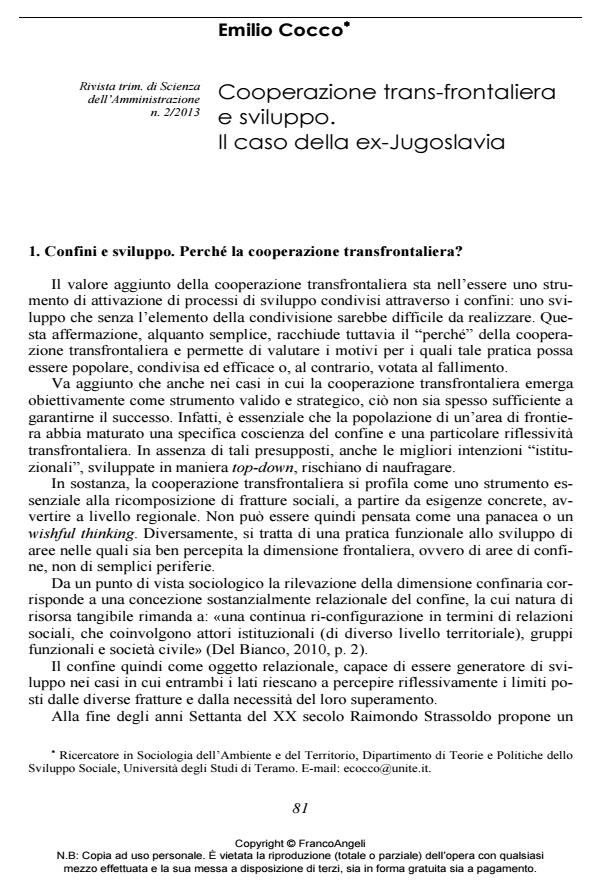Cross-border Cooperation and Development. The case of Former Yugoslavia
Journal title RIVISTA TRIMESTRALE DI SCIENZA DELL’AMMINISTRAZIONE
Author/s Emilio Cocco
Publishing Year 2013 Issue 2013/2
Language Italian Pages 20 P. 81-100 File size 478 KB
DOI 10.3280/SA2013-002006
DOI is like a bar code for intellectual property: to have more infomation
click here
Below, you can see the article first page
If you want to buy this article in PDF format, you can do it, following the instructions to buy download credits

FrancoAngeli is member of Publishers International Linking Association, Inc (PILA), a not-for-profit association which run the CrossRef service enabling links to and from online scholarly content.
Cross-border cooperation is one of the most appreciated and desired development promotion strategies in the European integration context. Particularly, cross-borders cooperation aims to combine the integrated growth of territories divided by national borders and the ability to compose the social fractures of those areas. Nevertheless, this strategy works only if the involved areas can represent themselves as border territories, that is to say to reflect the common development processes as a relational good of the people living in both sides of the border. The chapter discusses such problems with regards to the Balkan case, namely former Yugoslavia. The role of nationalism, the specificity of a frontier society, the state-building process and the political use of violence are some of the main factor in the making of a border area. The same factors set the frame of reference to assess meanings and ambitions of crossborders cooperation practices, and to understand the reasons of success or its predicaments.
Keywords: Development, Borders, Former-Yugoslavia
Emilio Cocco, Cooperazione trans-frontaliera e sviluppo. Il caso della ex-Jugoslavia in "RIVISTA TRIMESTRALE DI SCIENZA DELL’AMMINISTRAZIONE" 2/2013, pp 81-100, DOI: 10.3280/SA2013-002006